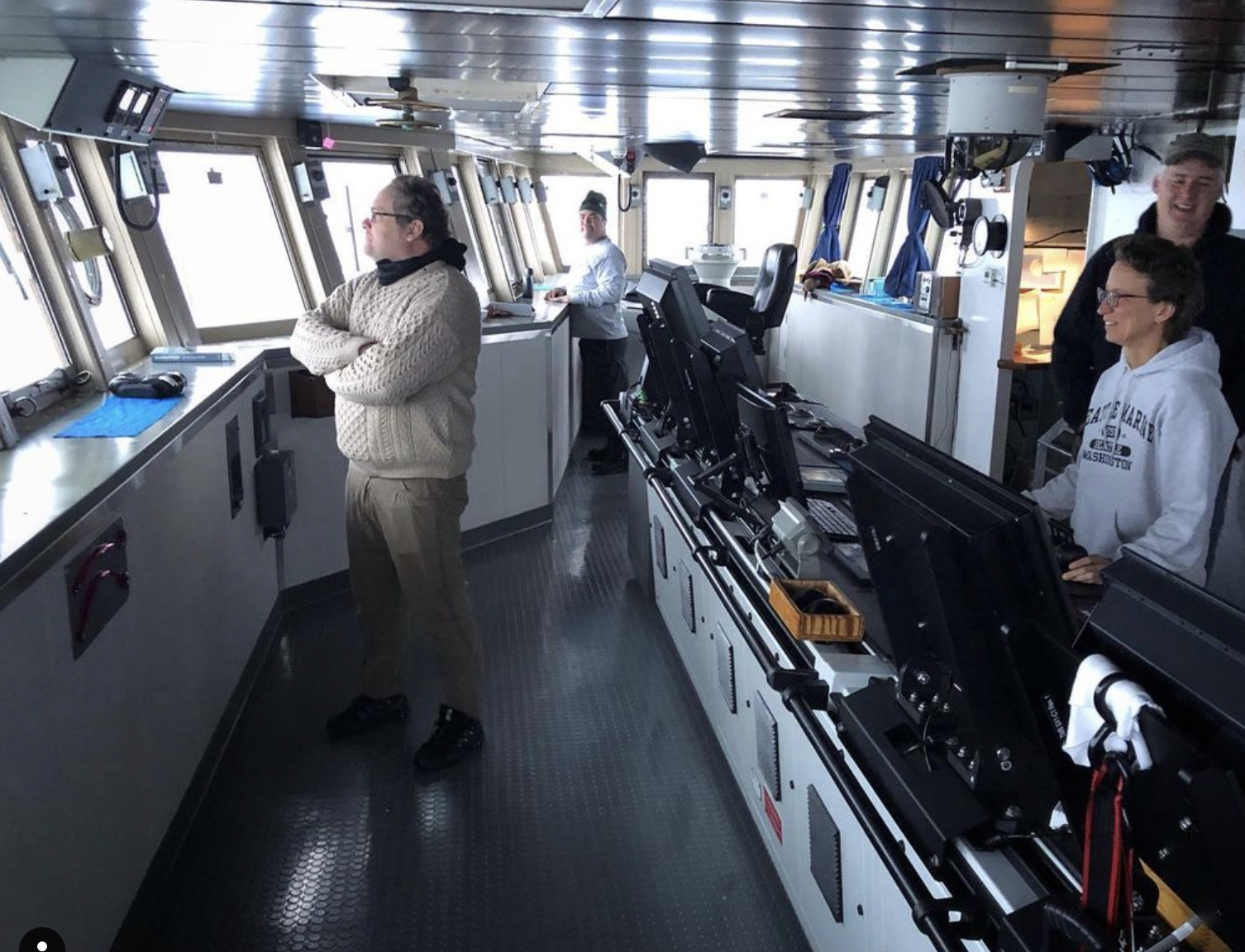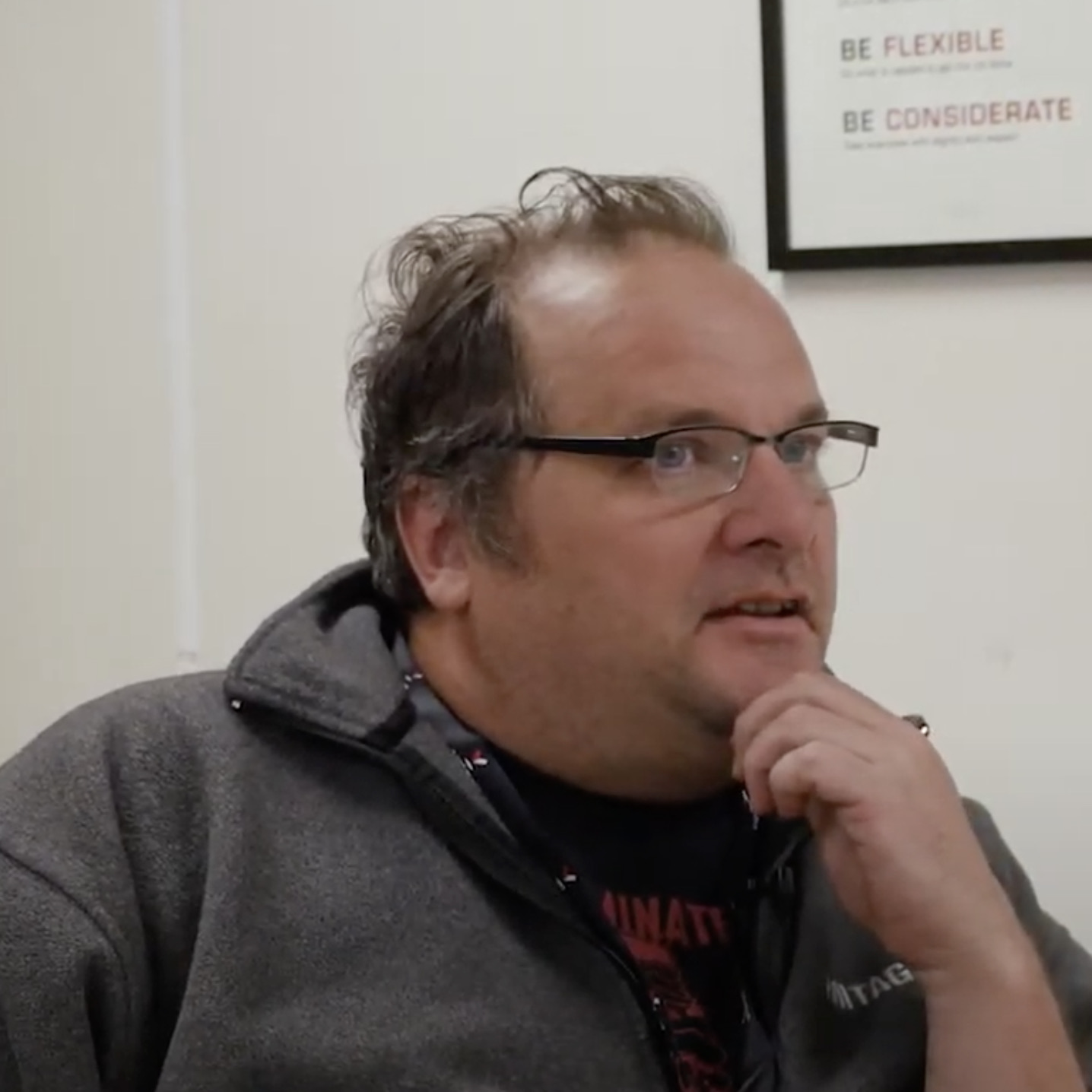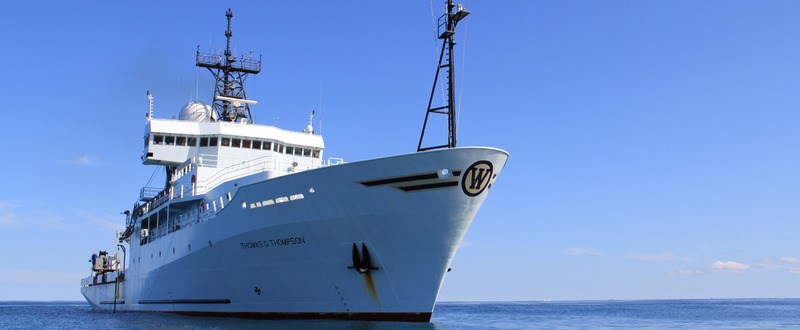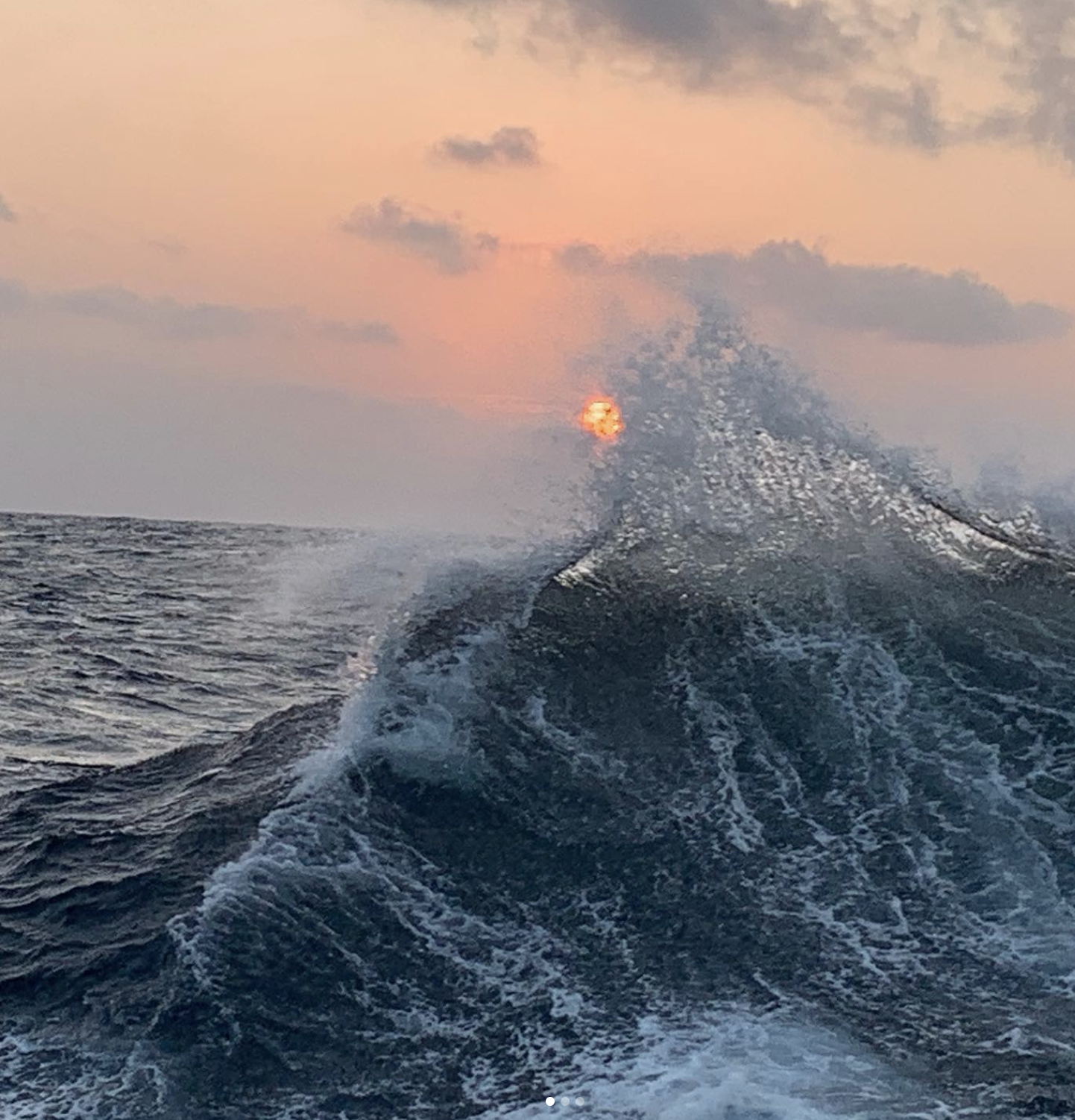Captain Eric Haroldson: 20 Years Aboard the Thompson
20+ Years on the Thompson; A Decade as Captain
Captain Eric Haroldson has lived half of his professional life as a captain aboard the R/V Thomas G. Thompson, which is operated by the School of Oceanography at the University of Washington. With a schedule of three months on, three months off, Haroldson spends roughly half his life at sea each year. And, when he returns to the vessel after three months on terra firma, he said, “The weirdest thing is that I can walk onto the ship after being away for three months and stand in the stair tower just after the galley. Same sounds same smells, everything’s the same. I click right back into it. It’s like I’ve never been gone.” Haroldson’s adjustment to land isn’t as smooth. He finds he needs to adjust to driving a car again and needs to have ceiling fans in his home to mimic the white and perpetual noise of the ship.
While onboard, Haroldson oversees offers 20 officers and crew, two marine technicians, and up to 36 scientists, depending upon the nature of the expedition. At home, he spends time making improvements to the home he built for himself in the woods.
In January, 2023, Haroldson marked a decade at the helm of the R/V Thompson. His journey started in the early 1980s, when he occasionally went to sea as part of the requirements for school and marine-related jobs. The seagoing bug finally hit him in full force in 1989, when he entered the California Maritime Academy. Four years later, he graduated with a third mates’ license and began a career focused on oil industry work.
His first job as a licensed officer was on an oil spill response vessel. After that, he sailed on oil tankers as a third mate. After the company he was working for was sold, he met some folks from Scripps Institution of Oceanography, which moved his career in the direction of oceanographic research. Haroldson sailed as third mate on a couple of Scripps’ ships, until the R/V Thompson needed someone to fill in for a couple of months in 1999. “That couple of months turned into 20 or something here, “ he joked.
Haroldson worked his way up to captain in a traditional way, starting as a third mate. After spending 365 days at sea, he was eligible to test to move up as a second mate. After another 365 days at sea, he tested for chief mate. With another 365 days at sea as chief mate and lots of additional classes and learning experiences, the next step was a master’s license, and ultimately followed by a captain’s license. Each step on the journey requires hands-on sea experience, as well as successfully learning (and passing) the requirements of the next job up the ladder with a host of new, different responsibilities.
Once Haroldson left the oil industry, he never looked back. “Not only is the work better aboard a research vessel, it’s more varied and interesting, not to mention important, but the variety is particularly important for those of us who have spent so much of their lives on the water.
He compared the work aboard an oil tanker – which ran between Valdez, Alaska and Exxon Benica in San Francisco Bay. “It was eight days to Valdez, a day and a half to load, followed by an eight-day journey to Benica, where we’d spend a day and a half offloading. The cycle constantly repeated itself and we could literally set our clock by it,” Haroldson explained. “When I started sailing oceanographic vessels, it was okay, well, this is more interesting, I was seeing something different every day. The variety of it gives the job definition and we manage the ship much differently.”
“As captain of a research vessel, we have the opportunity to work along-side scientists, which is great,” he added. “We sit around a table and together we figure out “how do we do this? Or how do we approach this? So there is not only the importance of the work that is happening onboard, but we have the opportunity to see the bigger picture of why this work is so important.”

While the ocean itself still presents the same challenges as it did 20 years ago when Haroldson began his journey, he has witnessed a lot of ancillary changes in how and where the ocean is used. “Ports are more interesting, with a greater variety of types of boats and people are fishing in areas where people didn’t fish ten years ago or so.” Haroldson added. He’s also witnessed the evolution of a more diverse crew, with women having a greater presence than in his early days aboard the oil tankers. At times, he’s sailed the R/V Thompson when all of the mates were female, and at other times, the crew has been more than half women.
Haroldson clearly relishes his job and provides a sense of safety, security, and humor while onboard. His greatest challenge seems to be always having to be two-steps ahead of everything in a realm where the rules and the physical condition under which he must safely operate his vessel are perpetually changing. This is no small task.
Sailing in and out of port at Newport Oregon is an example of staying two steps ahead of the game. Haroldson has to ensure that all ship operations are executed in a timely way so they can arrive at Newport at high tide slack water in daylight to avoid running aground. This requirement also provides the captain some flexibility in dictating scheduling. “If the weather is picking up and it will take a couple of hours to get to the site, there’s a decision to be made. Do you want to leave the dock and go out there and bounced around? Or does it make more sense to delay a little bit to the make the passage easier and more pleasant for everyone on board?”
Staffing creates another challenge onboard. Much like airline personnel, ship crew are limited in the number of hours they are allowed on the job. The maximum a crew member can work in a day is 15 hours. But if they work that full 15 hours, then for the next two days, they are only allowed to work up to a total of 20 hours. “We always have to be aware of the crew’s schedules and operate within these guidelines that help ensure safe operations.”
In looking back at his life on the water, Haroldson was enthusiastic about his path and optimistic of others who may follow him on a life well-lived a sea. “It makes for a challenging and rewarding life, and in some cases, there really are opportunities to travel and see the world. And, as long as one likes people and doesn’t mind being part of a community, it can be extremely gratifying—makes one appreciate life on and off the water.”



